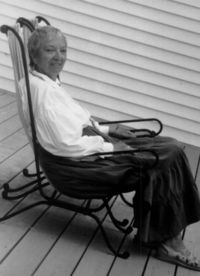Last night I ran into a friend whom I hadn’t seen since December. She was shocked at how different I looked. Since January 18, I’ve been following a program called The Alternate-Day Diet. I started at 225 lbs. (102 kg) and had a BMI of 33. A few days ago, I weighed in 202.5 lbs. (92 kg, BMI 29.9), a loss of 22.5 pounds or 10% of my starting weight in less than 13 weeks. And 20 lbs of my loss has been fat. I’m looking and feeling younger and I’m really looking forward to continuing the progress.
Why was she shocked? I’ve been obese now for a long time. I crossed into 200-pound-plus territory in 1998, never to return, except for a brief, ill-fated flirtation with the Atkins diet.
Until now, nothing else has helped me take it off. Several years ago, I tried Weight Watchers and found it decent for the strongly-disciplined, but I found counting points tedious and unendurable after a few months. Last year, I attempted the “mindfulness” approach described in I Can Make You Thin by Phil McKenna and The Gabriel Method by Jon Gabriel. It seemed dead-on in principle, but required a tremendous amount of time spent in mental conditioning, and the effort the constant mindfulness required was too difficult for me to keep with it.
The gist of The Alternate-Day Diet is to eat very lightly (really a modified fast) every other day. And on “up” days, eat just your usual amount. I’m keeping myself to around 500 calories on the short days … a few pieces of fruit and a protein bar, and another snack, like microwave popcorn or low-fat cottage cheese. I’ve found that as long as I spread my little snacks well throughout the day, I’m very seldom hungry unless I stay up very late.
The diet isn’t restrictive about what to eat at all… only that for weight-loss, you should limit your “down” days to about 25% of your typical intake. However, to use the diet simply for the benefits of the calorie restriction lifestyle, down days can be as much as 50% of regular intake. “Good” food is encouraged, of course, and the author says that most followers soon find themselves preferring healthier choices. That certainly has been my experience. On my up days, I tend to eat wraps and salads, heavy on vegetables, but often including eggs, cheese or fish. Sometimes I also enjoy a nice dessert. I’m losing my taste for many fried foods—I haven’t had or even wanted French fries since starting, and the thought of a heavy Chinese dish with fried rice actually repels me now. (On the other hand, I still have a weakness for tortilla chips!)
I’ve been blogging my progress on my review of the book at Amazon.
Since I’m training for a half-marathon in September, and I’m currently running about 10 miles per week, there’s a question of whether the weight loss is from the eating program or the running program. I believe it’s almost entirely from the eating program, because last fall I was training even more vigorously than I am now, and I didn’t lose a pound during three months of training. Seriously, my weight was as unchanging as a rock — 225, 225, 225 during the whole period, give or take a pound. More evidence is that in February, I was sidelined with an Achilles’ injury, and not running at all. I lost as much weight during that period as I did in March, when I resumed my running.
However, a mixture of cardio and strength training actually is part of the ADD, although it’s not emphasized and gets easily overlooked.
My goals? At first, I was thinking of shooting for a weight goal, 162 lbs (BMI 24), and possibly down to 145 lbs (BMI 21.5) which is where I stabilized when I got into great shape the first time. However, I’ve been reading about the advantages of Waist-to-Height Ratio over BMI as a fitness measure, and that, combined with the fact that I’m not being drawn to a low-fat diet like I was 20 years ago, makes me think a waist goal, rather than a weight goal, is more in order. My primary goal will be 34 in. (WHtR 49%), and then, I may decide to go further. We’ll see.
In the meantime, I’m looking forward to many more celebrations along the journey: crossing the 200-pound mark, breaking 190, buying new pants, and so forth. But the main thing is just the newness, freshness, strength and vitality I feel. It frims!











